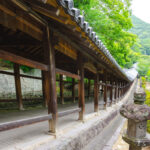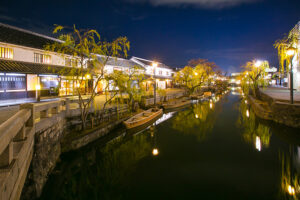
Located in Kurashiki City, Okayama Prefecture, the Kurashiki Bikan Historical Quarter (倉敷美観地区) is one of Japan’s most picturesque and beautifully preserved old merchant districts. With its white-walled storehouses, willow-lined canals, and cobblestone streets, the area perfectly captures the atmosphere of the Edo period (1603–1868), offering a rare glimpse into Japan’s traditional urban landscape.
Contents
Historical Background
During the Edo period, Kurashiki flourished as a prosperous merchant and river port town under the direct control of the Tokugawa Shogunate. The name Kurashiki literally means “town of warehouses,” referring to the kura that once stored rice and goods transported along the Kurashiki River.
These traditional storehouses, with their distinctive white plaster walls and black-tiled lattice designs, became architectural icons of the region. In the Meiji (1868–1912) and Taisho (1912–1926) eras, Kurashiki evolved into an early center of industrial modernization, particularly in textile production, giving rise to a unique blend of history and progress that still defines the town today.
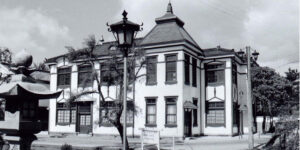
The Bikan District Today
The Bikan Historical Quarter preserves the elegant harmony of Edo and Meiji architecture while embracing modern creativity. Walking through the narrow streets, visitors will encounter:
-
Willow-lined Canals: Once used for transporting goods, these tranquil waterways now reflect the town’s historic beauty and seasonal changes.
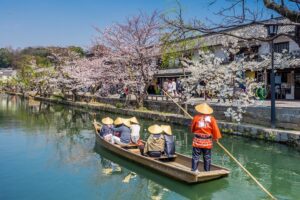
-
Historic Storehouses (Kura): Many have been converted into museums, art galleries, craft shops, and cafés, while maintaining their traditional exterior.
-
Traditional Boat Rides: Explore the canals from a low wooden boat, guided by boatmen in traditional attire, offering a unique perspective of the old townscape.
Cultural Attractions
-
Ohara Museum of Art (大原美術館): Japan’s first private Western art museum, founded in 1930 by Magosaburo Ohara, featuring works by El Greco, Monet, Gauguin, and Japanese contemporary artists.
-
Kurashiki Ivy Square: A former textile mill turned hotel, museum, and café complex. The ivy-covered red-brick walls are particularly photogenic in autumn.
-
Local Craft Shops & Delicacies: Kurashiki is famous for glassware, denim, and local sweets, including miso ice cream and fruit parfaits.
-
Achi Shrine (阿智神社): Situated on Tsurugata Hill, offering panoramic views of the Bikan District.
Seasonal Highlights
-
Spring: Cherry blossoms along the canals create a dreamy pink canopy.
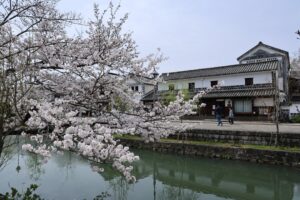
-
Summer: Lush greenery and summer festivals enliven the district.
-
Autumn: Fiery maple and ginkgo leaves contrast beautifully with white walls.
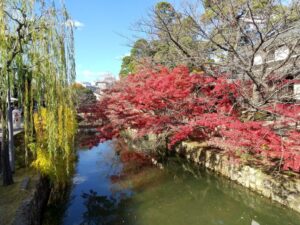
-
Winter: Softly illuminated streets evoke nostalgia and tranquility.
Visitor Information
-
Location: Kurashiki City, Okayama Prefecture (about 15 minutes on foot from JR Kurashiki Station)
-
Access:
-
From Okayama Station: 17 minutes by JR Sanyo Line
-
From Osaka: Approx. 1 hour 30 minutes by Shinkansen and local train
-
-
Recommended Visit Time: 2–3 hours (half-day trip)
-
Admission: The district is free; museums and galleries charge individual fees.
Tips for Visitors
-
Visit early morning or late afternoon for fewer crowds and soft, beautiful lighting over the canals.
-
Many shops close around 5–6 PM, but evening illuminations make the streets magical.
-
Don’t miss trying Kurashiki coffee, local fruit parfaits, and Okayama peach desserts in one of the cafés lining the canals.
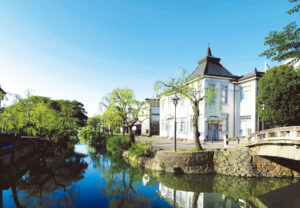
Kurashiki Bikan Historical Quarter is more than just a preserved town—it’s a living museum of history, art, and culture, where visitors can experience Edo-period architecture, traditional waterways, and modern creativity all in one stroll.
Related articles
Official Website
https://www.okayama-japan.jp/en/spot/10736
Accommodation sites
Agoda
